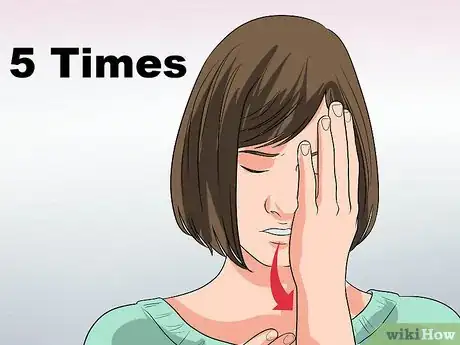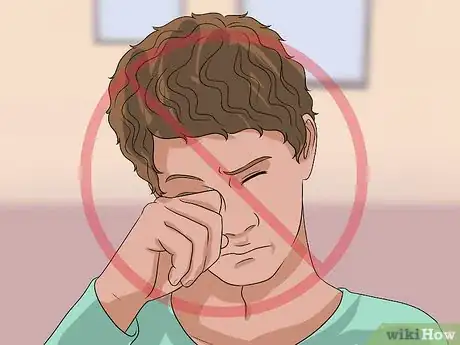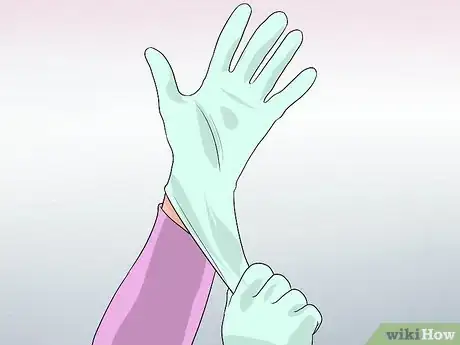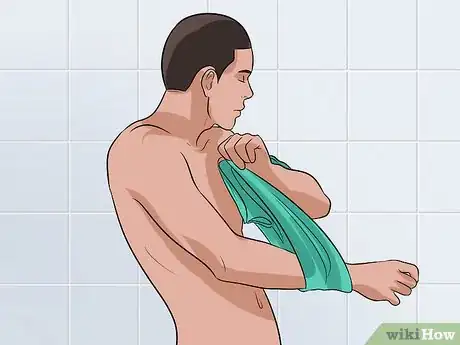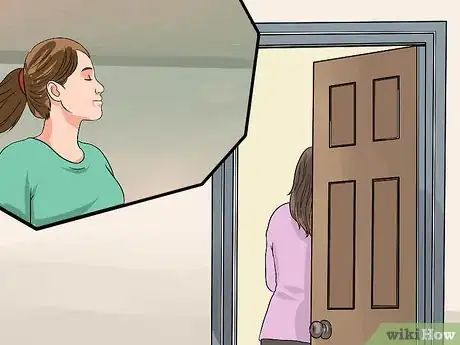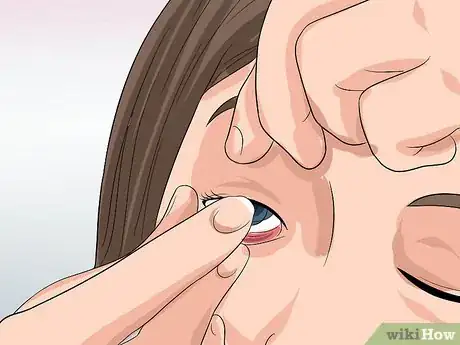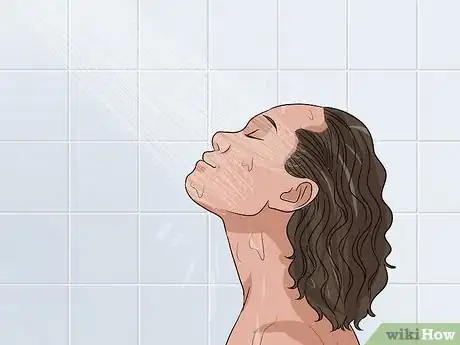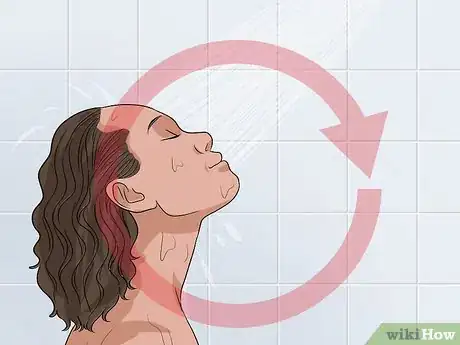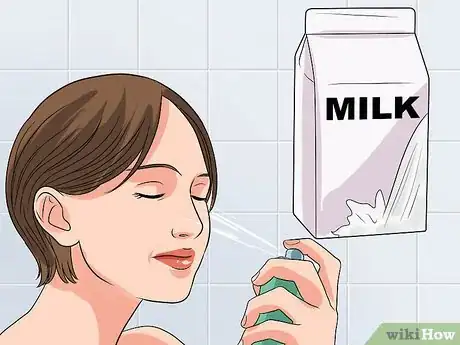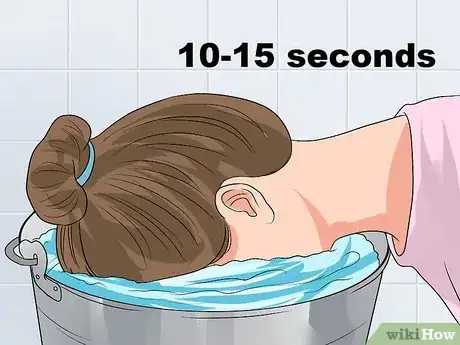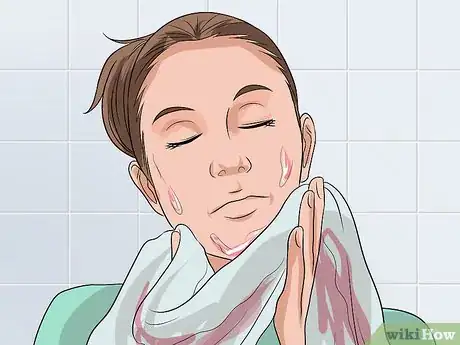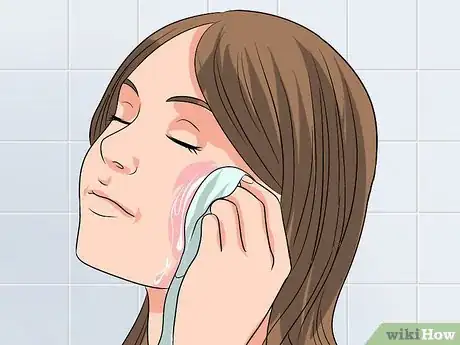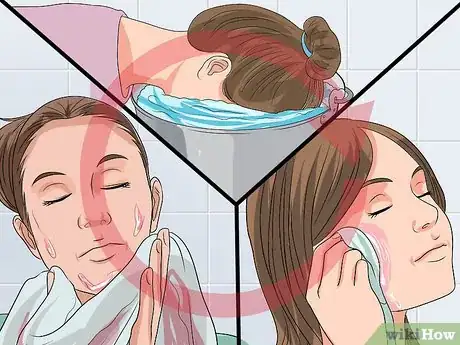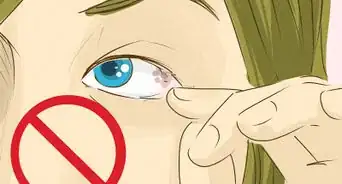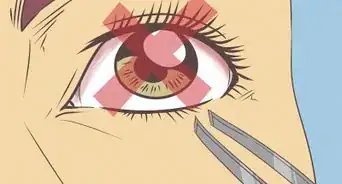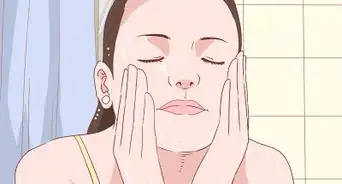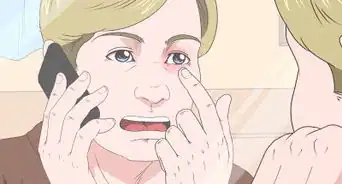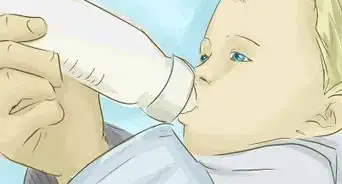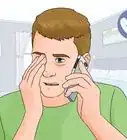This article was medically reviewed by Theodore Leng, MD. Dr. Leng is a board certified Ophthalmologist and Vitreoretinal Surgeon and an Assistant Professor of Ophthalmology at Stanford University. He completed his MD and Vitreoretinal Surgical Fellowship at Stanford University in 2010. Dr. Leng is a Fellow of the American Academy of Ophthalmology and the American College of Surgeons. He is also a member of the Association for Research in Vision and Ophthalmology, the Retina Society, the Macula Society, the Vit-Buckle Society, as well as the American Society of Retina Specialists. He received the Honor Award by the American Society of Retina Specialists in 2019.
There are 7 references cited in this article, which can be found at the bottom of the page.
This article has been viewed 46,708 times.
Experts say it's important to rinse out your eyes immediately after getting pepper spray in them because you'll feel better faster.[1] Pepper spray, or oleoresin capsicum, may be used by police to control suspects or contain crowds, but it's also a popular method of self-defense. Research suggests that pepper spray can cause intense burning in your eyes, temporary blindness, respiratory issues, and burning skin when it's sprayed in your face.[2] While you might be really scared and in pain, the effects of pepper spray usually wear off in about 15-30 minutes if you move to an area that's not contaminated.[3]
Steps
Minimizing Your Symptoms
-
1Remain calm. The symptoms of pepper spray might make you feel panicked and powerless, but try not to scream, clutch your eyes, or make any sudden movements. The pain will subside eventually. Take five deep breaths. Breathe in through your nose for five seconds and out through your mouth for five seconds.
-
2Ask someone to assist you. If your vision is impaired, you may injure yourself further by trying to move by yourself. Ask someone to guide you to a place where you can flush your eyes and sit down.Advertisement
-
3Blink repeatedly. Blinking more frequently than usual can help to wash the pepper spray residue out of the eyes.[4]
-
4Do not rub your eyes. The rubbing will make the burning sensation worse.[5] While many people have the instinct to touch or rub their eyes, do not do this!
-
5Make sure any person assisting you is wearing gloves. [6] Touching affected skin or clothes could spread the pepper spray to the person trying to help you. Be careful of contamination.
-
6Remove clothes with pepper spray on them. Take off the clothes carefully. Seal off the clothes in a plastic bag, if possible.[7] Try not to let the clothes touch anything.
-
7Find fresh air or a breeze.[8] If you are inside, go outside, preferably somewhere breezy. Blow fresh air onto your face with a fan, if one is available.
-
8Call emergency services if you see symptoms of anaphylaxis. Going into anaphylactic shock is rare with pepper spray reactions,[9] but if you see any of these severe symptoms, call emergency services:
- Skin reactions, such as hives or itching
- Flushed or pale skin
- Warm feeling
- Having a “lump” in your throat
- Constricted airway, swollen tongue, and throat, trouble breathing
- Weak and rapid pulse
- Dizziness or fainting
- Nausea, vomiting, or diarrhea
Flushing Your Eyes with Water
-
1Take out contact lenses if you are wearing them. The pepper spray residue will not come out of the contact lenses.[10] Throw away the contact lenses immediately.
-
2Flush your eye, letting the water run from the inner corner of your eye to the outer corner. Even though it might be uncomfortable, keep your eyelids open to let the water flow over your eyes. The water temperature should be warm, not hot or cold, and should be a temperature that is comfortable for you to flush your eyes for a long time.[11] There are a couple different methods you can use to flush your eye:
- Stand under a shower.
- Put your face under a faucet with running water.
- Spray your open eyes with a kitchen sink sprayer or a garden hose very gently.
- Fill a tub or pan with water and then immerse your face in it with eyes open.
- Pour water from a pitcher, jug, or water bottle over your open eye.[12]
-
3
Soothing Your Skin and Removing Pepper Spray
-
1Put whole milk on the affected area to soothe the skin. You should first soothe the skin with whole milk and then take away the pepper spray residue with a soap and water solution. While whole milk will not remove the oils causing your skin to burn, it will ease the burn. There are several ways you can apply whole milk to your skin:[15]
- Put whole milk in a spray bottle and spray your skin.
- Pour it on a cloth or towel and then apply the cloth to your skin.
- Splash it directly onto your skin.
-
2Make a solution in a bucket that will take the pepper spray residue off of your skin. The solution should be 75% water and 25% dish soap, like Dawn. Make at least a gallon of this solution.
-
3Submerge your face into the soap and water solution. Do this for ten to fifteen seconds at a time, if your face is affected. Do not touch your face. Repeat this until your face begins to feel normal.
-
4Immerse your hands in the solution. In removing the spray you may have gotten some on your hands. Soak your hands in the solution to remove the spray. Eventually, you may use your hands to use a solution-soaked towel or cloth to clean other affected parts of your body.
-
5Work the solution into affected parts of the skin gradually. The solution may activate the capillaries a little bit, which might be painful; however, this process will take the oils from the pepper spray out of your skin.
-
6Continue this process for 15 to 45 minutes. The process of getting the pepper spray out is gradual. Be patient and remain calm.[16]
Warnings
- Never do something illegal, because someone can pepper spray you right away to stop you from:
- Committing a violent crime (e.g. in self-defense)
- Leaving after you clearly did something illegal (e.g. by a citizen's arrest), especially when it's a felony, and
- Resisting arrest if that person is a police officer who is arresting you, which is illegal, even if you're innocent.
⧼thumbs_response⧽ - Committing a violent crime (e.g. in self-defense)
References
- ↑ https://emergency.cdc.gov/agent/riotcontrol/factsheet.asp
- ↑ https://www.ncbi.nlm.nih.gov/pmc/articles/PMC5851502/
- ↑ https://emergency.cdc.gov/agent/riotcontrol/factsheet.asp
- ↑ http://www.pepper-spray-store.com/pages/removing-pepper-spray
- ↑ https://ww2.kqed.org/news/2011/11/22/what-are-the-health-effects-of-pepper-spray
- ↑ https://ww2.kqed.org/news/2011/11/22/what-are-the-health-effects-of-pepper-spray
- ↑ https://ww2.kqed.org/news/2011/11/22/what-are-the-health-effects-of-pepper-spray
- ↑ https://ww2.kqed.org/news/2011/11/22/what-are-the-health-effects-of-pepper-spray
- ↑ http://www.pepper-spray-store.com/pages/antitdote
- ↑ http://www.pepper-spray-store.com/pages/antitdote
- ↑ https://www.ccohs.ca/oshanswers/safety_haz/emer_showers.html
- ↑ http://www.webmd.com/eye-health/tc/eye-flushing-topic-overview
- ↑ https://ww2.kqed.org/news/2011/11/22/what-are-the-health-effects-of-pepper-spray
- ↑ http://www.pepper-spray-store.com/pages/removing-pepper-spray
- ↑ http://www.pepper-spray-store.com/pages/antitdote
- ↑ http://www.pepper-spray-store.com/pages/antitdote
